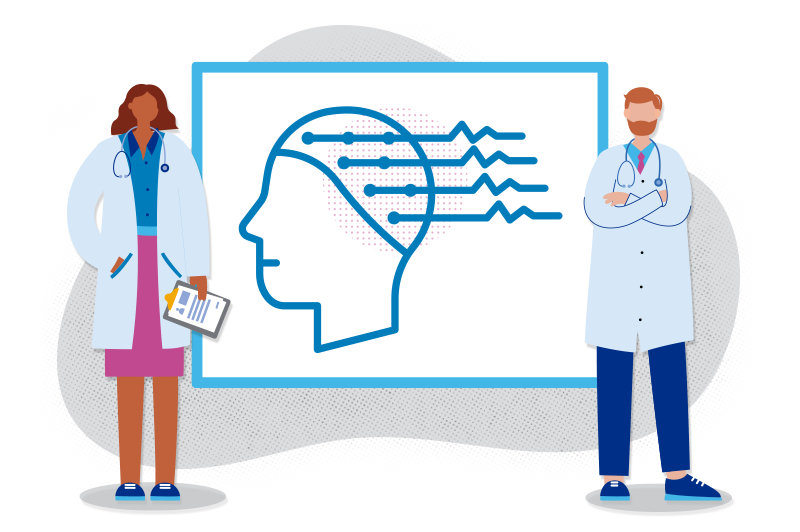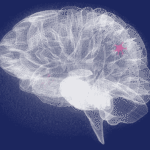Finding epilepsy hotspots before surgery: A faster, non-invasive approach

Neurosurgery for patients with drug-resistant epilepsy requires locating the precise brain areas that are generating the seizures. Typically, patients undergo 7 to 10 days of invasive intracranial EEG monitoring, with electrodes surgically implanted inside the brain through one or more skull openings to capture seizure activity as it happens.
Eleonora Tamilia, PhD, directs the Epilepsy Monitoring Unit Signal and Data Science Program within the Epilepsy Center at Boston Children’s Hospital. Her team has piloted a much briefer method for mapping seizure zones. Not only is it noninvasive, but can it provide information a traditional EEG reading cannot. It combines standard scalp EEG readings with MRI data on brain structure to identify connections between different areas of the brain and uses machine learning to locate the most epileptogenic brain regions.
“Using computational tools, we can reconstruct cortical activity that the eye cannot catch and understand how different regions are functionally connected,” explains Tamilia, who is also part of the Fetal-Neonatal Developmental Science Center (FNNDSC). “If a seizure starts in one region of the cortex, it’s likely to spread to another network it connects to. Even regions that are far apart may fire together.”
Predicting seizure zones
As described recently in Epilepsia, Tamilia and her colleagues retrospectively analyzed about five minutes of scalp EEG data from 50 patients with drug-resistant epilepsy who had neurosurgery. Adding MRI data and using machine learning algorithms, they were able to define functional cortical networks — even during times when no epileptiform activity was visible to the naked eye and even when the MRI showed no obvious brain abnormalities.
“When there were spikes on the EEG, our predictions were more precise, but we could still get an estimate without them,” Tamilia says.
During epileptiform activity, the algorithm achieved 75 percent accuracy (91 percent sensitivity, 74 percent specificity) in identifying the surgically targeted seizure zones. During quiet periods, it achieved 62 percent accuracy.
The algorithm was less likely to match the targeted zones in patients who continued to have seizures after surgery, suggesting that the implemented surgical plan did not actually pinpoint the seizure focus. “This suggests that the plan could have been changed,” Tamilia says. “In cases of unsuccessful surgery, the model indicated epileptogenic regions that were not completely removed.”
The tool could also indicate that the epilepsy area is too broad to resect, and that patients may instead benefit from other palliative treatments such as neuromodulation, she adds.
The researchers now hope to validate their findings in a larger, prospective cohort and define which patients with drug-resistant epilepsy are most likely to benefit from surgery. Because their technique is brief and noninvasive, it could be used early in the course of disease, Tamilia says. This could enable some children to have epilepsy surgery sooner rather than later, avoiding some of epilepsy’s neurodevelopmental outcomes.
Learn more about the Epilepsy Center and FNNDSC at Boston Children’s.
Related Posts :
-

Treating brain 'hotspots' and networks to address autism, aggression, and more
What if doctors could break down conditions like autism into their key symptoms, map these symptoms to “hotspots” in the ...
-

Infantile spasms: Speeding referrals for all infants
Infantile epileptic spasms syndrome (IESS), often called infantile spasms, is the most common form of epilepsy seen during infancy. Prompt ...
-

This two-handed robot goes deep into the brain
Robots have become common partners in the OR, enabling surgeons to operate through small incisions and manipulate tools endoscopically, avoiding ...
-

Parsing the promise of inosine for neurogenic bladder
Spinal cord damage — whether from traumatic injury or conditions such as spina bifida — can have a profound impact on bladder ...





